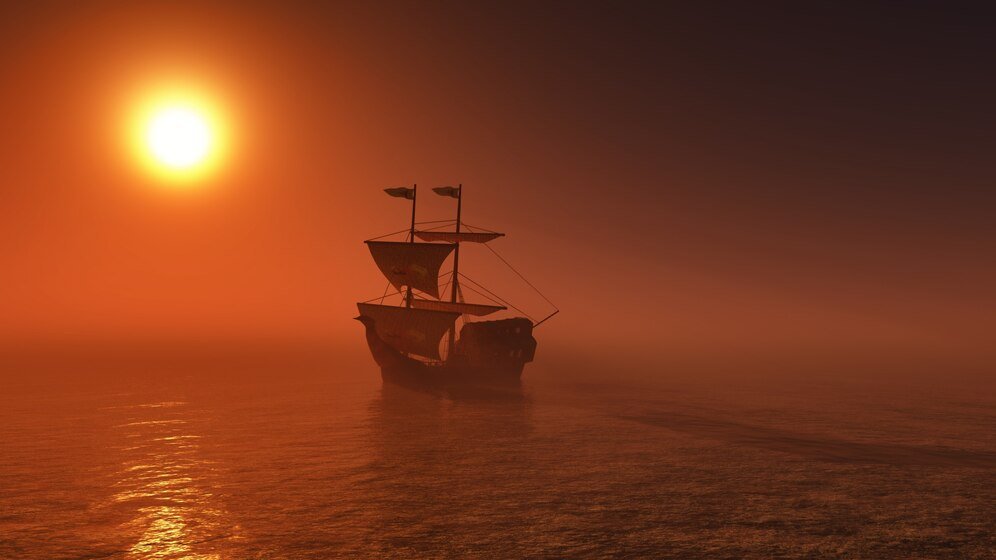Pirate ships have long captured the imagination of people around the world. These iconic vessels, with their billowing sails and skull-and-crossbones flags, are symbols of adventure, rebellion, and the thrill of the high seas. Throughout history, pirate ships have significantly shaped maritime trade, warfare, and culture. In this article, we will delve into the fascinating world of pirate ships, exploring their history, design, crew, and legacy.
A Brief History of Pirate Ships
The history of pirate ships dates back centuries, with piracy reaching its peak during the 17th and 18th centuries, known as the Golden Age of Piracy. During this time, pirate ships prowled the waters of the Caribbean, Atlantic, and Indian Oceans, preying on merchant vessels and disrupting global trade routes.
Pirate ships emerged as a response to political, economic, and social upheavals of the time. Many pirates were former sailors, soldiers, or slaves seeking freedom and fortune. Others were driven to piracy by poverty or a desire for adventure. Regardless of their motivations, pirates operated outside the law, forming loose alliances known as pirate crews and establishing hidden bases called pirate havens.
The Design of Pirate Ships
Pirate ships were typically modified versions of existing vessels, chosen for their speed, maneuverability, and capacity for carrying plunder. One of the most iconic types of pirate ship was the “sloop-of-war,” a fast and agile ship favored by pirates for its ability to chase down prey and escape larger naval vessels.
The design of pirate ships evolved over time to suit the needs of their crews. Many pirate ships were heavily armed, boasting cannons, swivel guns, and other weaponry to intimidate and overpower their victims. They were also equipped with boarding nets, grappling hooks, and other tools for engaging in close combat.
Life Aboard a Pirate Ship
Life aboard a pirate ship was harsh and dangerous, yet it held a certain allure for those seeking freedom and adventure. Pirate crews were diverse, consisting of sailors from various backgrounds and nationalities. Contrary to popular belief, pirates were often governed by a strict code of conduct, known as the “pirate code,” which regulated issues such as division of plunder, punishment for disobedience, and democratic decision-making.
The daily routine aboard a pirate ship was rigorous, with crew members responsible for tasks such as navigation, maintenance, and lookout duty. Piracy was not for the faint of heart, and pirate crews faced numerous dangers, including storms, disease, and encounters with rival pirates or naval vessels.
Famous Pirate Ships and Captains
Throughout history, certain pirate ships and captains have achieved legendary status for their daring exploits and audacious attacks. One such ship was the Queen Anne’s Revenge, commanded by the infamous pirate Blackbeard. This fearsome vessel terrorized the waters of the Caribbean in the early 18th century, capturing numerous merchant ships and striking fear into the hearts of sailors everywhere.
Another legendary pirate ship was the Whydah Gally, captained by the notorious pirate Samuel Bellamy. Originally a slave ship, the Whydah was captured by Bellamy and converted into a pirate vessel, becoming one of the most successful and feared ships of the Golden Age of Piracy.
The Legacy of Pirate Ships
Despite their criminal activities, pirate ships have left a lasting legacy on maritime history and popular culture. The image of the pirate ship, with its black sails and Jolly Roger flag, has become synonymous with rebellion and adventure. Pirate ships have inspired countless works of literature, art, and film, from Robert Louis Stevenson’s Treasure Island to the blockbuster Pirates of the Caribbean.
In addition to their cultural impact, pirate ships played a significant role in shaping the course of history. By disrupting colonial trade routes and challenging the authority of empires, pirates contributed to the downfall of the old world order and the rise of new maritime powers.
Conclusion
In conclusion, pirate ships occupy a unique place in the annals of maritime history. These iconic vessels, with their storied past and legendary captains, continue to capture the imagination of people around the world. From the swashbuckling adventures of the Golden Age of Piracy to the enduring appeal of modern-day pirate lore, pirate ships remain symbols of freedom, rebellion, and the untamed spirit of the high seas.

